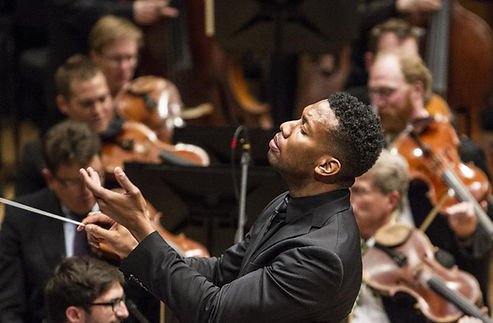By: Jonathan Han
American Orchestras have faced backlash for their lack of diversity for many years, but Asian and Latino players are gradually becoming more common. But black musicians continue to be underrepresented in American Orchestras.
According to a study by the League of American Orchestras, people of color make up only 21% of orchestra players (people of color include black players), 14% higher than in 2013-14. But the number of black musicians only rose from 1.8% to 2.4% in the same time frame. The classical music industry has acknowledged its problems with diversity for years, but turnover is difficult because many players are tenured, leaving few slots open.
Some suggest that orchestras eliminate the blind audition process, where musicians try out behind screens. This system was introduced in the 1970s to remove possible bias when hiring. This process has helped more women win posts in orchestras, but some argue to start considering race and ethnicity when hiring.
Titus Underwood, the principal oboist at the Nashville Symphony, stated, “Can you say that you’re an American orchestra without having any black representation? We must reflect American culture; American culture is nothing without black musicians being at the center.”
The number of Asian players has increased from 9 to 11%. The number of Latino players also grew from 2.5% to 4.8%. Still, they remain underrepresented because they comprise 19% of the population. Since the 2020 social justice protests, orchestras have increased efforts to encourage diversity. They have hired more colored staff members; orchestra staff is now composed of 23% colored people, compared to only 15% a decade ago. In recent years, art leaders have expanded access to youth orchestra programs, financial assistance, coaching, and opportunities to audition through the National Alliance for Audition Support. Since 2018, about 150 Black and Latino musicians won auditions thanks to the help of the alliance. Now, people of color make up 32% of conductors compared to 16% last decade.
Afa Dworkin, president of the Sphinx Organization, believes there isn’t a talent shortage, just insufficient opportunities. Lina González-Granados, the resident conductor of the Los Angeles Opera, stated, “We are making strides, but it is incredibly challenging because the systems in classical music is not made to be individualistic.” Black employees at orchestras have increased by 6% in the past decade in the orchestra administration. People of color in top leadership posts and on boards has also increased by 8%. Though many artists are frustrated with the slow progress, many are delighted to see recent improvements. Jeri Lynne Johnson, founder, and artistic director of the Black Pearl Chamber Orchestra in Philidelphia, stated, “Rather than waiting for the system to make room for us, we’re creating our own opportunities. We’re building our own network. We’re making a path for each other.”











